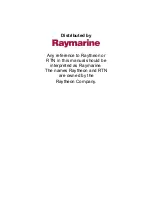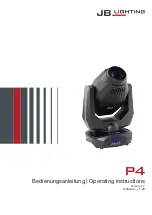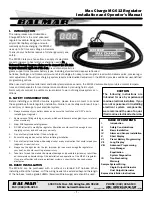
11
Your harness should be thoroughly inspected before each use. Inspections
should be recorded and the details maintained in an equipment inspection log.
Keep these instructions and the equipment inspection log with the harness so
that the user can read and make important inspection entries.
A sample equipment inspection log is provided in these instructions but you
may need to make your own with the same criteria. Any harness that does
not pass inspection should be immediately retired from service and destroyed
or serious injury or death could occur. Detailed inspection criteria must be
established by the user according to his needs.
Inspections should include at a minimum:
• Examination of all load-bearing components for signs of damage.
• Inspection of all stitching for signs of wear, fraying, breaks, loosened/
pulled threads, or cuts.
• Inspection of webbing for signs of cuts, burns, discoloration, broken
fibers, hard/soft sections, or excessive wear.
• Examination of buckles, screw links, and attachment points for proper
function.
• Examination of all metal components for corrosion, damage or sharp
edges.
• Inspection of webbing rigging to ensure that harness has been properly
assembled.
• Inspection for any signs of damage from heat, chemical exposure, or
other environments.
• Inspection of in-service date.
• Inspection of date of manufacture.
MAINTENANCE AND STORAGE
Approved American National Standard ANSI/ASSE Z359.11-2014 Annex
A- Normative American National Standard Safety Requirements for Full Body
Harnesses
Note: This information from the Z359.11 standard is required to be included
in the instruction manual for the end user:
1. Maintenance and storage of equipment shall be conducted by the user’s
organization in accordance with the manufacturer’s instructions. Unique
issues, which may arise due to conditions of use, shall be addressed with
the manufacturer.
2. Equipment which is in need of, or scheduled for, maintenance shall be
tagged as unusable and removed from service.
3. Equipment shall be stored in a manner as to preclude damage from
environmental factors such as temperature, light, UV, excessive moisture,
oil, chemicals and their vapors or other degrading elements.
The following maintenance guidelines should be followed:
• Store harness loosely packed in a clean, dry environment.
• Thoroughly air dry a wet harness before storing it; never dry in a heated
dryer.
• Keep your harness away from exposure to direct
fl
ame or high
temperatures such as in a hot vehicle.
• Prevent exposure of your harness to chemicals or other damaging
substances.
USER INSPECTION, MAINTENANCE & STORAGE OF EQUIPMENT
(continued)
continued on next page...


































